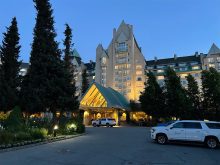WHAT wonderful news that Muhammed Yunus and his Grameen Bank were awarded the Nobel Peace Prize this year. What a high profile recognition that increasing inequality leads to conflict and increasing equality leads to peace.
In 1976, professor Yunus launched an action research program aimed at reducing poverty by extending credit to the poorest of the poor in Bangladesh. Grameen means rural or village in the local Bangla language.
The Grameen system is compellingly simple. A group of five prospective borrowers is formed. Only two can receive the first loan and the whole team ensures the loan is repaid since only then can the others borrow money.
Read Also

Downturn in grain farm economics threatens to be long term
We might look back at this fall as the turning point in grain farm economics — the point where making money became really difficult.
No collateral is used other than the trust offered by the community. A track record is quickly established and borrowers who successfully repay the first loan can then borrow larger amounts.
The first loan made was for $27. Since 1983 the Grameen bank has lent $5.1 billion to 5.3 million people and adds more than one percent annually to the Gross Domestic Product of Bangladesh.
Some realities are hidden by these figures. Yunus’ action research project became a bank through government legislation and received support from both the central bank and the nationalized commercial banks. The Grameen bank is 90 percent owned by the poor whom it serves with the government owning the remaining 10 percent. Most of the borrowers are women and the loan repayment rate is 95 percent.
Readers familiar with the credit union and co-operative movements will recognize some familiar features in this arrangement, especially the emphasis on self-help activities and collective action to promote economic and social development.
I began to wonder if there were any modern Canadian examples continuing to work in this tradition. I immediately thought of Father Greg MacLeod.
MacLeod is a Catholic priest who grew up in Cape Breton, an economically depressed but socially vibrant part of Nova Scotia. In 1976 he created a community development corporation named New Dawn Enterprises. One of its first challenges was to deal with the shortage of dentists on the island of Cape Breton.
New Dawn built and equipped a dental clinic and then persuaded a newly graduated dentist to occupy it. The young dentist was attracted because he didn’t need to borrow money to establish himself. New Dawn then repeated this process until Cape Breton had established a good reputation as a place to practise dentistry. Over 25 years the number of dentists on the island increased from two to 70.
New Dawn also responded when a local rope factory was being sold and relocated to the United States. The factory had been built with government money and locals thought they should have a chance to revive it before it was taken away. It was the women of the community who blockaded the factory site and prevented it being removed and it was New Dawn that negotiated the purchase. The rope factory is now a thriving commercial venture.
Yunus and MacLeod have demonstrated that when communities get behind an idea, they bring something with real value to the table. Economists are beginning to call this ‘social capital’. It is as valuable as financial capital but you won’t find it under the mattress. You find it in your relationships in the community.
Christopher Lind writes frequently in the area of
ethics and economics. He is researching a book on practical ethics while serving as senior resident at Massey College, University of Toronto.
















